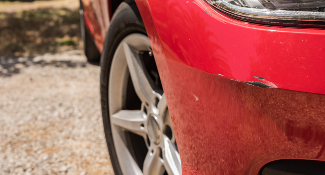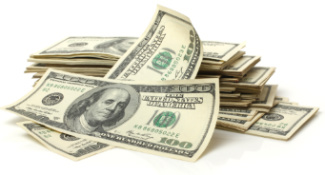Although it's not the right option for all car shoppers, trading in your car at a car dealership is a convenient way to part with your old car.
Trading in your car essentially means you are selling it to the dealership, and the dealership knocks the amount they pay you off the total price of your new or used ride.
This overview of how to trade in a car will be helpful as you go through the steps.
Step-by-Step Process of Trading In Your Car
Find out what your car is worth
Before bringing your used vehicle to a car dealer for the trade-in process, you should figure out the car's value by consulting a price guide. The Edmunds and Kelley Blue Book price guides, for example, provide fair price listings for a wide range of cars, factoring in details such as a car's mileage and condition. Also, look to the NADA Guides (National Automobile Dealers Association) for input on your vehicle's value.
Consider getting your trade-in appraised.
CarMax, a used-car retailer, also provides appraisal services. Bring your current car to CarMax for a detailed inspection, and CarMax makes a written purchase offer that's good for seven days. You can even use this offer as proof of your car's value at a dealership. Once you have a reasonable estimate of the purchase price of your vehicle, you're ready to haggle with potential buyers.
Gather paperwork and items needed for the trade-in
Some essential things associated with your automobile must be handed over during a trade-in, such as your license, title, keys, and registration, and make appointments at several dealerships so you can compare offers.
Bring car loan documents for the vehicle if applicable (due to an unpaid car loan).
Make your trade-in as presentable as possible
Although you shouldn't worry about reconditioning your vehicle before selling it, since you're unlikely to recoup the cost of those fixes, it's a good idea to make the car as presentable as you can: vacuum it, detail the exterior and interior, run it through a car wash.
If it's a car in better condition and with plenty of value left in it, consider a decent detailing service. You'd be surprised how nice it will make your vehicle's interior and exterior look. That kind of presentation can improve the dealership's valuation of your trade-in.
What To Expect From a Car Trade-In
When you take your old car to a dealer for a trade-in, the dealer's representative usually test-drives and inspects it before making a trade-in offer.
If you still owe money on an old auto loan for your car, you can still trade it in. After the amount of the loan is subtracted from your car's value, any equity left over is deducted from the price of the new vehicle. However, if you're upside down on your loan, meaning you owe more on the loan than the car is worth, then the dealer can add the negative equity to the balance of the new car loan.
This strategy might be tempting, especially if you need a new vehicle right away and don't have much money to spend on paying down your loan first, but it's also risky. As soon as you drive off the lot in your shiny new Ford or Toyota, its value depreciates, pushing you further into the red. Then, when it comes time to trade in for your next car and get a new loan, the negative equity will follow you.
If you can't pay back the underwater loan and missed monthly payments appear on your credit report, your credit score may suffer. In addition, you may find it easier to pay off any negative equity with credit cards before making a trade-in. If this situation sounds familiar and you are upside-down in the loan on your car, then it is likely a better option to sell your car yourself, maximize the sale amount, and apply that money to pay off your car yourself.
You might also wait to purchase the new or used vehicle you're interested in until you have cleared the old loan balance or at least paid enough on the loan so that it is no longer underwater and you have positive equity in your car.
Other Considerations When Making Trade-Ins
Knowing when to trade in cars can be tricky to figure out. Generally, you want to trade in your vehicle when it's in high demand. Then, dealers are more likely to give you greater offers. You can sometimes get better offers at the end of the year since they try to make room for new models and make more generous trade-ins to get vehicles off their hands.
Remember that you can trade-in your car even if you're leasing it, though it's generally only wise to do this if a dealer offers you more than the buyout cost of your lease. That way, you can pay off the lease contract and fund a down payment on the new car.
One advantage of making a trade-in is that, in many states, you only have to pay sales tax on the new car price minus the trade-in value, not the total car price of the car.
Another consideration when car buying is that you may get a better trade-in deal if the price of your new car is high since the dealer is more eager to get your business.
Common Mistakes To Avoid When Trading in a Car
Trading in an old car can be intimidating, especially for people who've never done it before. Many common trade-in mistakes stem from minor oversights. Keep in mind that although dealers seem intent on helping buyers as much as possible, such as handling loan transfers, they may charge fees for some of these services. It's always a good idea to include these fees in deciding whether to trade in your car.
Don't trust the dealer's judgment too much when handling lease and loan details. Even if the final arrangement doesn't serve the buyer's best interest, these details can be confusing, and buyers are usually too exhausted from negotiations to study each document they sign. To ensure you get the best deal, carefully read the dealer's policies in advance and ask all questions that come up, so you can sign with confidence.
When trading your car in, don't overestimate its value. Price guides offer the average market values for vehicles in good shape, and dealers want to buy cars below the average to make a profit. It's tempting to cling to the highest value among price guides when trading in your vehicle, especially if you're emotionally attached to your car. However, doing so may lead to disappointment when a dealer shoots down your offer. Instead, be honest with yourself when evaluating the condition of your car; most guides will provide a range of values, depending on your vehicle's condition. If you look only at the "like-new" values, but your car is actually in average condition, you could have unrealistic expectations of the car's worth.
Additionally, it is important to avoid trying to hide damaging information about the car. Dealers can find any registered car's history on Carfax, and they have an eye for flaws regardless, so this approach rarely works. If you claim to have higher offers from other dealers than you do, the dealer is likely to request the offer in writing. Dealers have a good idea of how much other dealers are prepared to deviate from the market average when making a trade-in, so they're not easy to fool.
Is It Smart to Trade in My Car?
Although trading an old car in is a fast and easy way to get rid of it with minimal hassle, the truth is that changing a car in is not always the best approach. There are some drawbacks to trade-ins, too.
The biggest of which being is that you will rarely, if ever, get the best price or the best offer for your car when you trade it in as you would if you sold it to a private party. Dealerships only offer the wholesale value of your vehicle since they are in business to make money, and it makes no sense for them to take trade-ins if they can't make some cash on the deal. The difference between trading your car and selling it to a private person can be as much as a few thousand dollars to as little as a few hundred.
Additionally, trading your car in can add a new level of confusion to the deal. A car salesperson tends to blend the three components of a car deal (the car's price, the allowance for your trade-in, and the terms of the lease or loan) into a package presented to you as the amount of a monthly car payment. It can blur the lines between whether you're getting anything for your trade-in at all or if the dealership is simply marking up the cost of the new car to absorb the trade-in offer they make.
You can skip this potential confusion about the value of your trade and the trade-in amount by simply selling the car yourself instead of trading it in and then using the money to offset the cash outlay needed for a down payment. Remember, the more you pay down, the more likely your chance of getting a better interest rate.
The Bottom Line
Parting with your old car can be tricky, particularly if you have owned the car for many years. It's not unusual for people to become emotionally attached to their vehicles.
Still, there comes a time when it makes no sense to keep your car, and trading it in is a practical way to get rid of it while also reducing the amount you spend on your new vehicle.


